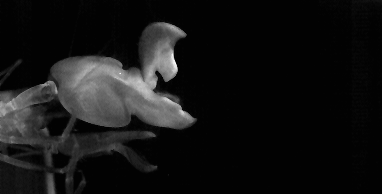Pistol shrimp may look unassuming, but these small marine creatures are some of the ocean’s most fascinating and powerful animals. Famous for their ability to create explosive snaps with one claw, pistol shrimp shape their ecosystems and even baffle scientists with their unique behaviors. If you’re eager to discover why pistol shrimp are so extraordinary, dive into these top interesting facts and frequently asked questions!
What Makes Pistol Shrimp So Unique?
- Superpowered Claw: Pistol shrimp have one claw that’s massively larger than the other. This specialized claw creates a loud snap used for hunting and communication.
- Loudest Animals in the Ocean: The snapping bubble can reach up to 218 decibels—louder than a gunshot and even rivaling the sound of a jet engine.
- Deadly Cavitation Bubble: The claw closes so fast it shoots a jet of water, generating a bubble that stuns or kills prey by creating a shockwave, not by direct impact.
- Burrow Builders: Pistol shrimp create and fiercely defend burrows in sand, mud, or coral, which serve as their hideouts and hunting bases.
- Teamwork with Goby Fish: Many pistol shrimp form symbiotic partnerships with goby fish. The shrimp digs and maintains the burrow while the goby stands guard and warns of danger with a flick of its tail.
- Global Distribution: Pistol shrimp are found in warm tropical and temperate seas worldwide, often inhabiting coral reefs, rocky bottoms, and seagrass beds.
- Small but Mighty: Most pistol shrimp are only about 3–5 centimeters (1.2–2 inches) long, but their impact on the underwater world is huge.
- Short Life, Big Impact: They typically live 2–4 years in the wild, but can reach up to 5 years in captivity with proper care.
- Adaptive Survivors: They thrive in environments with varying salinity and can be found in brackish water, estuaries, and even salt marshes.
- Interfering with Technology: Large groups of pistol shrimp snapping at once are noisy enough to disrupt underwater sonar and submarine operations.
Pistol Shrimp Quick Facts Table
| Feature | Description |
|---|---|
| Size | 3–5 cm (1.2–2 inches) |
| Claw Function | Snapping to create shockwaves and sound |
| Sound Level | Up to 218 decibels |
| Habitat | Coral reefs, seagrass beds, rocky bottoms, burrows |
| Diet | Small fish, prawns, krill |
| Lifespan | 2–4 years (wild), up to 5 years (captivity) |
| Distribution | Tropical and temperate seas worldwide |
| Symbiosis | Shares burrows with goby fish |
How Does the Pistol Shrimp Snap Work?
Pistol shrimp have a unique claw that acts like a high-speed water gun. When the shrimp opens its large claw, water fills a small pocket. By slamming the claw shut, a plunger forces the water out at immense speed, forming a bubble. As this bubble collapses (a process called cavitation), it produces a tremendous shockwave and audible ‘snap’—enough to kill prey, defend territory, and even break glass aquariums.

Frequently Asked Questions About Pistol Shrimp
Can a pistol shrimp hurt a human?
While the pistol shrimp’s snap is deadly to small prey, it’s not dangerous to humans. However, its powerful claw could cause a small pinch if handled improperly.
What do pistol shrimp eat?
Pistol shrimp are carnivores that eat small fish, prawns, and krill. They use their snapping claw to hunt and stun their food.
Where do pistol shrimp live?
Pistol shrimp are found worldwide, especially in tropical and subtropical waters. They inhabit coral reefs, rocky areas, and seagrass beds, and some species even live in estuaries and marshes.
How long do pistol shrimp live?
In the wild, pistol shrimp live about 2 to 4 years. In captivity, with proper care, they may live up to 5 years.
Do pistol shrimp and goby fish really work together?
Yes, many pistol shrimp share burrows with goby fish. The shrimp maintains the burrow, and the goby uses its sharp eyesight to alert the shrimp of danger. This partnership helps both species survive.
How many species of pistol shrimp are there?
There are about 400 known species of pistol shrimp, with the Indo-West Pacific region hosting over 250 of them. New species are still being discovered regularly.
If you’re fascinated by marine life, the pistol shrimp is a must-know example of how the smallest animals can have the biggest impact. Whether you’re watching them in an aquarium or reading about their underwater feats, these snapping wonders never fail to amaze!

